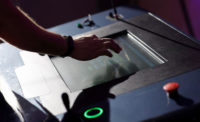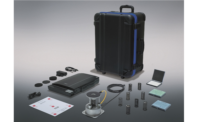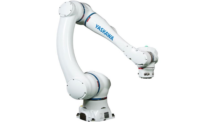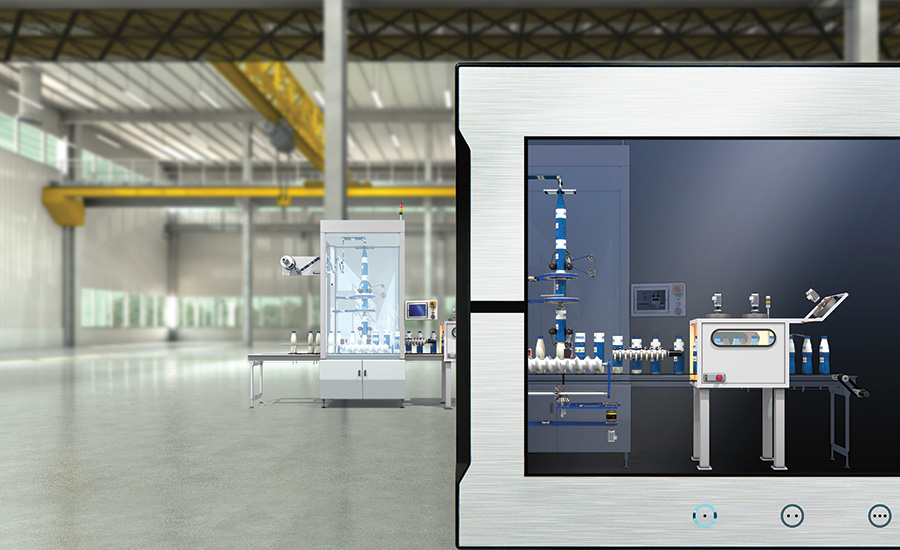Automation
Giving the Human-Machine Interface a More Human Touch
There are more opportunities for machinery to respond directly to input from human operators.






Although robots are becoming an increasingly widespread feature of industrial manufacturing, there’s no reason to believe that human capabilities will soon be irrelevant on the factory floor. In fact, as flexible production strategies gain prominence, human creativity has become more critical than ever before — and machines need to be able to harness it.
As automation technologies progress, there are more opportunities for machinery to respond directly to input from human operators. However, if this equipment lacks an intuitive interface, it can be prohibitively difficult for operators to access the full range of functionality. This is why a good human-machine interface (HMI) is extremely important.
The typical application for an HMI involves any scenario in which a human must interact with a machine or process. If an operator needs to push information into — or read information back from — a piece of equipment that’s involved in a particular process, HMI technology makes it possible to do so.
A Brief History of the HMI
The HMI started out as a replacement for pushbuttons. It soon became clear that programming an HMI-type display would cost less than having an electrician wire up individual pushbuttons and display devices on each machine panel. Early HMIs grew out of a world in which basic push buttons and indicator lights constituted the core of the configuring object toolkit.
At this time, the processors, memory and peripheral hardware used in the HMI devices were fairly esoteric. Due to the relative fragility of commercial-grade hardware at the time, many manufacturers selected military-grade components for the HMI and the rest of the control system. This led to high prices and limited supplies.
The durability of hardware components rose dramatically with the arrival of the personal computer (PC) and mobile devices. Prices have also improved since PCs, cell phones and tablets started driving volume manufacturing of compact durable components. In fact, touchscreens showed up on industrial HMIs long before they appeared in mobile devices.
HMI software and firmware development has also undergone major changes. Instead of assembly code and X86-type processors, designers can now utilize the latest reduced instruction set computing (RISC) architecture and devices like ARM or ATOM processors — similar to what’s used in today’s mobile devices.
The operating systems have evolved as well. Early HMI devices had proprietary operating systems that kept familiarity, reusability and function growth to a fairly low level. Currently, there’s a trend toward standardizing open systems so that familiar tools can be reused over generations of hardware in places where design talent is more widely available.
Today’s State-of-the-Art HMIs
The most advanced HMIs on the market today feature powerful graphing objects, trending objects, recipe tools and even standalone programming languages like C++ and VB.Net. Templates are available for logic, motion, vision, safety, robotics and networking applications. Some PLC functionality is even being offloaded to HMIs so that PLCs can do other things.
Many manufacturers are taking advantage of remote screen viewing of HMIs on mobile devices to let supervisory personnel see what the operator is seeing and collect some quick machine status and production-related information at any time. For example, a supervisor can remotely view the operator’s screen during a meeting to confirm the status of a particular process.
The ability to display media in popular formats on the HMI during run-time is becoming a must-have capability. PDF, Excel, Word and video-format viewers allow the HMI program to train operators to run machines and troubleshoot issues. For example, a machine jam can log an alarm and then display a video on how to clear the jam and get the machine going again.
Wide-screen, high-resolution displays are showing up on many new HMI models. Wider screens allow for the placement of more control objects and reduce the number of screen changes needed for a particular process or operation. High-resolution control panels can also impart greater value to a machine, which tend to be favored by end users.
Manufacturers are also starting to prefer environments with shared tag databases and integrated configuration options. For automation suppliers like Omron that can provide end-to-end solutions, it’s important to reduce the number of programming packages that must be maintained in order to implement a solution.
The Advantage of Using One Manufacturer
As today’s automation solutions depend more and more on data analysis to enhance production flexibility and improve predictive maintenance, it’s becoming increasingly important to have tightly integrated systems that facilitate data collection and transfer. In order to get the full benefits of the data, it needs to be easy for operators to access it for analytical purposes.
User-friendly interfaces are essential for this purpose. Modern programmable logic controllers (PLCs) can store data internally and communicate that data to other parts of the system, but there’s no easy way for operators to direct data handling without an HMI. If the HMI is too difficult for operators to understand, much of the value of machine data will be lost.
Both local and remote HMIs may be necessary for the real-time monitoring of machine behavior and process control. It can be difficult to get this functionality to work well when the PLC and HMI come from different manufacturers. If both technologies come from the same manufacturer, the tricky integration work will already have been completed.
The Future of the HMI
It’s not easy to predict where HMI technology is headed. That said, given the emphasis on flexibility and modular design throughout manufacturing, we’re likely to witness the unbundling of features contained in HMIs to suit the needs of end users. Ultimately, users want to pay only for features that they will use, while retaining the ability to purchase other features later.
Cloud technology has introduced a number of entirely new concepts into the world of industrial control. There eventually may be parts of the HMI and control system residing in a private or public cloud. Models may evolve wherein the HMI or other control hardware is either purchased or perhaps leased and based on the particular functionality required.
The features probably will be downloaded to the hardware from the cloud using unique Internet of Things (IoT) identifiers (such as a MAC ID or IP address) or serial numbers associated with what the customer has purchased or leased for the device. The cloud may also provide a way to store information that’s not directly needed for machine control.
If compliance-related data, operator activity data, security records, product traceability data, predictive maintenance data, alarm histories and the like can all be stored in the cloud as a service, the only data that really needs to stay local to the machine would be control-centric data. The cloud could ultimately minimize IT work for controls engineers.
With flexible organic light-emitting diode (OLED) displays on the way and flexible circuit boards already here, we may see HMI displays that are flexible enough to mount on uneven surfaces and offer improved durability in vibration-prone environments. Concepts are also being developed that use eye movements and hand gestures to modify an object or function.
One thing is for sure: The ways in which we interface with machines will continually evolve. At Omron, we strive to be at the forefront of the effort to help humans interact more flexibly and intuitively with machines.
Omron Automation is an industrial automation partner that creates, sells and services fully integrated automation solutions that include sensing, control, safety, vision, motion, robotics and more. Established in 1933 and currently headed by President Yoshihito Yamada, Omron’s 36,000 employees help businesses solve problems with creativity in more than 110 countries. Learn more at automation.omron.com.
Looking for a reprint of this article?
From high-res PDFs to custom plaques, order your copy today!









